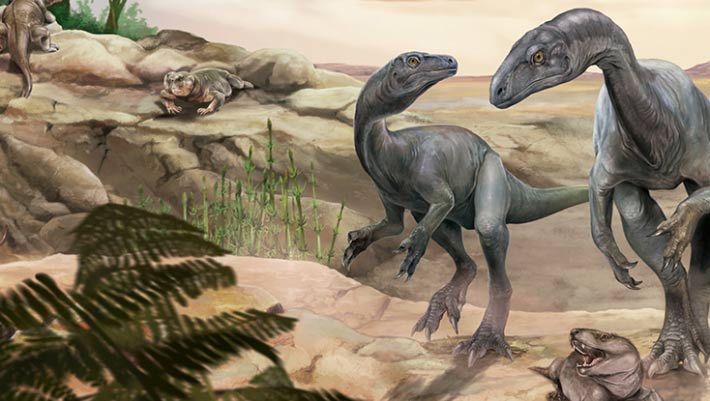A groundbreaking discovery in southwestern Kenya has sent shockwaves through the world of archaeology. In the region near Lake Victoria, archaeologists have uncovered ancient stone tools that could rewrite the history of early human development. These tools, which could be up to 3 million years old, were found at a site near fossilized remains of Paranthropus, a distant human ancestor.
Uncovering the Past at Nyayanga
The Nyayanga archaeological site, located in the southwestern part of Kenya, has been the focus of intense excavation work from 2014 through 2022. During this period, researchers discovered over 300 stone tools, many crafted from quartz and rhyolite, two materials known for their durability. These tools have been classified as Oldowan, one of the earliest forms of stone tools. The Oldowan tradition, once thought to be linked only to the genus Homo, is now being re-evaluated in light of this new discovery.
The tools found at Nyayanga are particularly significant not only for their age but for where they were found. The excavation yielded these tools alongside fossils of Paranthropus, a hominin species believed to have lived around 2.9 million years ago. This finding suggests that Paranthropus, once thought to be incapable of making or using tools, may have had tool-making abilities far more advanced than previously believed.


Challenging Conventional Views on Tool Use
For decades, the general consensus in anthropology was that stone tools were strictly the domain of Homo species, such as Homo habilis. These hominins, with their larger brains and more sophisticated cognitive abilities, were considered the first true toolmakers. However, the tools uncovered at Nyayanga alongside Paranthropus fossils challenge this long-standing assumption.
The discovery, published in the journal Science, suggests that non-Homo species, such as Paranthropus, may have used tools in ways that had been previously dismissed. Emma Finestone, a paleoanthropologist from the Cleveland Museum of Natural History who worked on the excavation, expressed surprise at the implications of this find, saying, “Paranthropus has been thought of as a hominin that didn’t use tools, but the evidence at Nyayanga suggests otherwise.”
Evidence of Butchering Large Animals
One of the most striking elements of the Nyayanga excavation is the discovery of butchered animal bones, including those of hippopotamuses. These bones show signs of being processed with the stone tools found at the site. Previously, it was believed that early hominins lacked the tools and skills required to butcher large animals, such as hippos. This new evidence complicates that view, suggesting that Paranthropus may have had the ability to process large prey, possibly through scavenging rather than hunting.


Thomas Plummer, the lead researcher from Queens College, expressed the significance of this find: “This is the first time we’ve found evidence that Paranthropus may have been involved in butchering large animals like hippopotamuses.” This discovery challenges earlier beliefs about early human ancestors’ ability to interact with their environment, particularly in terms of obtaining meat from large animals.
Oldowan Tools Push the Timeline Back
Before the Nyayanga discovery, the oldest known Oldowan tools were found in Ethiopia, dated to around 2.6 million years ago. The tools uncovered in Kenya, however, could be as old as 3 million years, pushing the origin of Oldowan technology further back than previously thought.
Oldowan tools, while simple in design, are considered one of the most important milestones in human evolution. These tools were primarily used for cutting, scraping, and processing meat, marking a significant advancement in the development of early hominin survival strategies. Their widespread use, seen across Africa and beyond, suggests that this form of tool-making was pivotal to the survival and spread of early human ancestors.
The findings at Nyayanga not only extend the timeline for Oldowan tool use but also raise important questions about the relationships between early hominins, the tools they used, and the animals they interacted with. The discovery is a crucial piece in the puzzle of human evolution and could reshape the understanding of how our ancient ancestors lived, adapted, and thrived.
Source link


